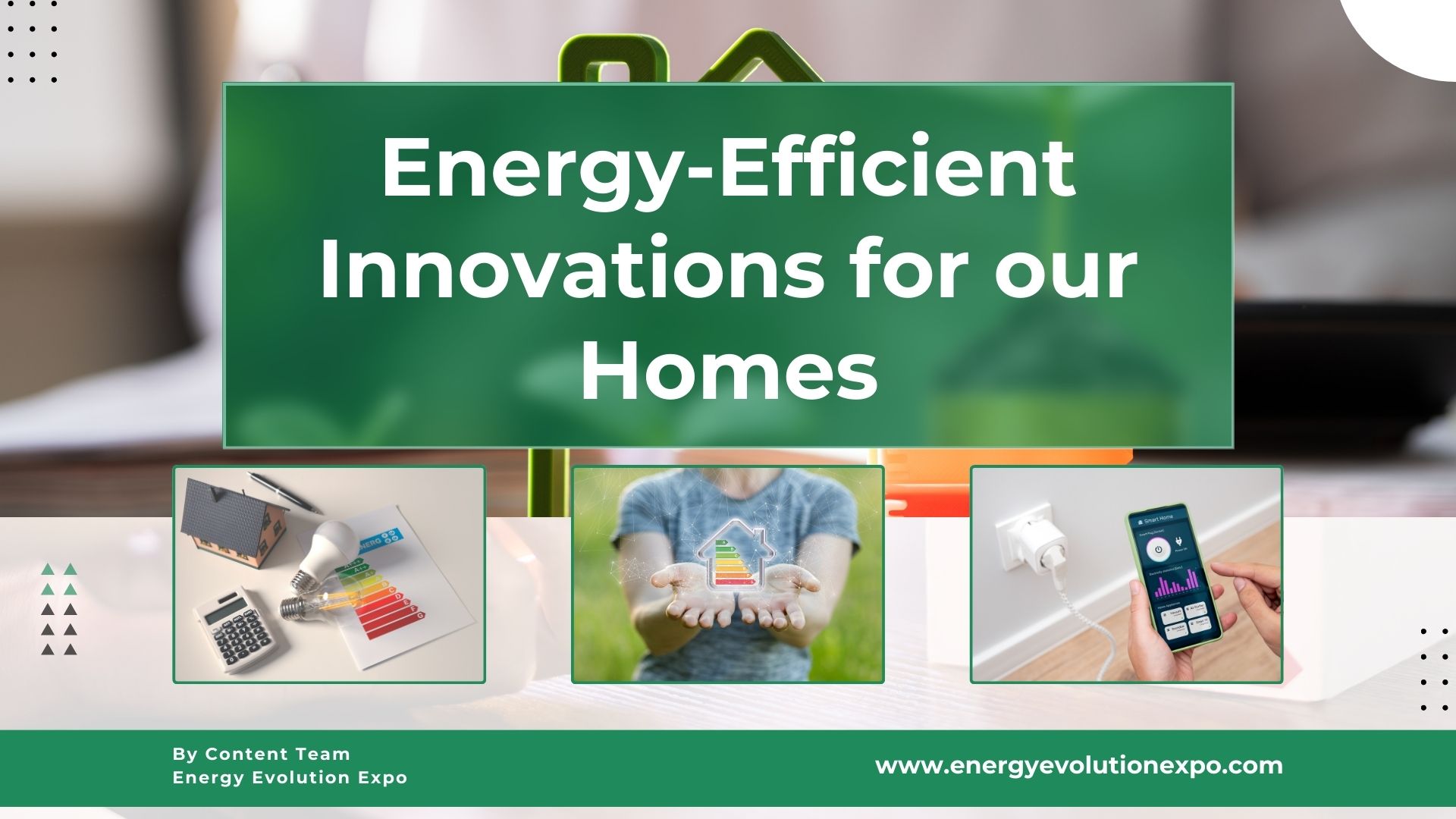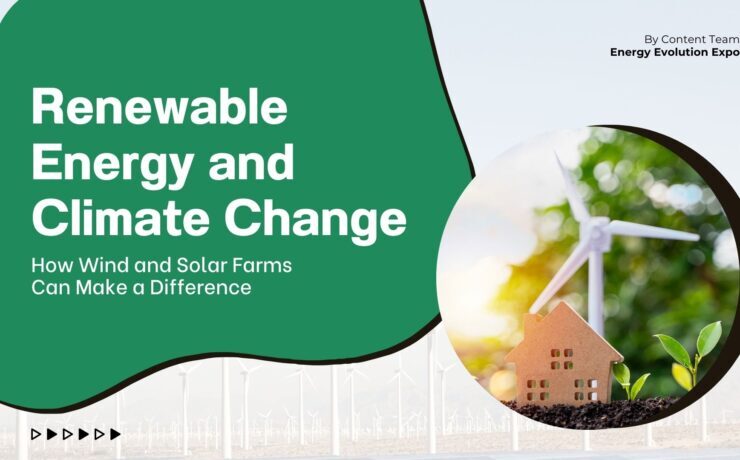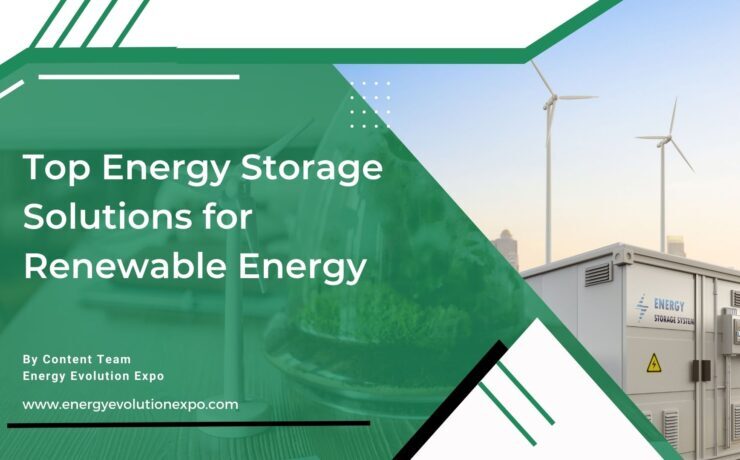Energy-Efficient Innovations for our Homes

Maximizing Energy Efficiency
Energy efficiency involves more than just reducing energy consumption, it’s about maximizing the use of energy and preventing waste. Efficient homes help combat climate change by cutting greenhouse gas emissions. Achieving true energy efficiency requires both changes in daily habits and technological upgrades. An efficient home reduces unnecessary energy use, decreases greenhouse gas emissions, and lowers the demand for non-renewable resources while providing sustainable living conditions and significant cost savings.
Building or renovating a home for efficiency involves selecting the right thermal insulation for walls, ceilings, doors, and windows, and using renewable energy sources like solar panels and electricity storage systems. Additionally, incorporating technological solutions such as LED lighting, energy-efficient appliances, and smart control systems is crucial for optimizing energy consumption.
Energy efficiency certificates measure how well buildings meet these standards. In the European Union (EU), each country has a certification organization that assigns efficiency ratings from A to D. Globally, the LEED certificate recognizes sustainable buildings, considering factors like innovation, sustainable materials and resources, location, and water use.
Table of Contents

Sustainable Living
Sustainable living encompasses a holistic approach to harmonizing human existence with the natural world, ensuring present needs are met without compromising the ability of future generations to thrive. It involves conscious choices and actions aimed at minimizing environmental impact, conserving natural resources, and fostering social equity. From reducing energy consumption and waste generation to promoting eco-friendly transportation and supporting local and organic food systems, sustainable living integrates principles of environmental stewardship, economic viability, and social responsibility. By embracing sustainable practices in our daily lives, we can create healthier, more resilient communities and contribute to the preservation of our planet for generations to come.
Technological Innovations for Sustainable Living
Let’s look at some of the technological innovations helping to achieve efficiency at home:
Smart Thermostats:
Smart thermostats significantly enhance home energy efficiency through various advanced features, promoting sustainable living. For instance, the Nest Learning Thermostat adapts to your schedule and temperature preferences, adjusting settings automatically to save energy. Similarly, the Ecobee Smart Thermostat provides detailed energy reports and integrates with room sensors to ensure even heating and cooling throughout your home.
Honeywell’s Lyric T6 Pro allows geofencing, adjusting the temperature based on your proximity to home. Additionally, the Emerson Sensi Touch can be controlled via smartphone, enabling remote adjustments to avoid unnecessary heating or cooling when you’re away. These devices also incorporate weather adaptation features, like the Tado° Smart Thermostat, which pre-cools or pre-heats based on weather forecasts. Maintenance alerts from thermostats such as the Johnson Controls GLAS help keep your HVAC system running efficiently, preventing energy waste while fostering sustainable living.
Smart Lighting and LED Technology:
Smart lighting and LED technology significantly enhance energy efficiency at home, contributing to sustainable living practices. LED bulbs, such as those from Philips Hue and Cree, consume up to 75% less energy and boast longer lifespans compared to traditional bulbs. Smart lighting systems like LIFX enable remote control via smartphone apps, empowering users to curtail unnecessary energy consumption by turning off lights from anywhere. Motion sensors, exemplified by Sengled Smart LEDs, automatically activate lights in occupied rooms and deactivate them in vacant ones.
Moreover, dimming capabilities, as seen in products like the Lutron Caseta Wireless Smart Lighting Dimmer Switch, allow users to adjust brightness levels, conserving energy when full illumination isn’t necessary. Integration with other smart devices, such as Nest thermostats, ensures lights are off when no one is home, further optimizing energy usage. Voice control via Amazon Alexa or Google Assistant simplifies lighting management with straightforward commands. Additionally, scene-setting features in systems like the Leviton Decora Smart enable tailored lighting for various activities, enhancing energy efficiency while promoting sustainable living.
Smart Power Strips:
Smart power strips enhance home energy efficiency by eliminating standby power waste and providing greater control over multiple devices. For example, the Belkin WeMo Insight and Kasa Smart Wi-Fi Power Strip by TP-Link allow remote control and scheduling via smartphone apps, ensuring devices are only on when needed. The APC Smart Plug Surge Protector lets users create schedules for each outlet, while the Etekcity Voltson Smart Wi-Fi Outlet offers energy monitoring to track and optimize usage. Devices like the TrickleStar 7-Outlet Advanced PowerStrip automatically shut off peripherals when the primary device is off, and the iDevices Switch integrates with smart home systems for automated power management.
Smart Appliances:
Smart appliances are innovative solutions that enhance energy efficiency and convenience in households. For instance, smart refrigerators like the Samsung Family Hub feature built-in cameras and connectivity, enabling users to remotely monitor and manage their food inventory, reducing energy waste by minimizing unnecessary door openings. Similarly, smart washing machines such as the LG ThinQ series utilize sensors and AI technology to optimize water and energy usage based on load size and fabric type, resulting in significant energy savings over time.
Smart dishwashers like the Bosch 800 Series offer features like delayed start and load sensing, allowing users to schedule cycles during off-peak hours and avoid running the appliance with less-than-full loads, thus conserving energy and water. Additionally, smart ovens and ranges from brands like Whirlpool and GE provide remote control and monitoring capabilities, enabling users to preheat, adjust settings, and receive notifications via smartphone apps, ensuring efficient cooking and minimizing energy consumption. By integrating these smart appliances into their homes, consumers can enjoy increased energy efficiency, reduced utility bills, and greater convenience in their daily lives.
Smart Windows:
Smart windows are innovative solutions that enhance energy efficiency in homes by dynamically controlling the amount of sunlight and heat entering the living space. For instance, electrochromic windows, such as those offered by View Inc., can change their tint or opacity in response to external conditions or user preferences. By darkening during hot sunny days, smart windows reduce solar heat gain and glare, thus reducing the need for air conditioning and artificial lighting.
Additionally, these windows can be integrated with sensors and automation systems to adjust tint levels automatically based on factors like outdoor temperature, sunlight intensity, and time of day. Another example is thermochromic windows, which change transparency in response to temperature fluctuations. As temperatures rise, these windows darken to block excess heat, while in cooler conditions, they become transparent to allow natural light in.
Smart HVAC Systems:
A smart HVAC (Heating, Ventilation, and Air Conditioning) system represents an advanced heating and cooling solution equipped with intelligent technology for automated control, monitoring, and optimization of indoor climate conditions. These systems typically include smart thermostats capable of learning user preferences, adjusting temperatures based on occupancy patterns, and being remotely controlled via smartphone apps.
Additionally, smart HVAC systems often feature zoning capabilities, allowing different areas of the home to be independently heated or cooled for enhanced energy efficiency. Integration with home automation platforms enables seamless operation and coordination with other smart devices, while advanced sensors and algorithms contribute to optimizing energy usage and maintaining optimal comfort levels. One prominent example is the Ecobee Smart Thermostat, which utilizes sensors and machine learning to adapt to your schedule and preferences, optimizing energy usage without sacrificing comfort.
Another notable system is the Nest Learning Thermostat, which learns your habits and adjusts temperatures accordingly, saving energy while keeping you comfortable. Additionally, systems like the Carrier Infinity Series with Greenspeed Intelligence offer variable-speed technology that adjusts airflow and capacity to precisely match your home’s heating and cooling needs, maximizing efficiency. Integration with smart home platforms such as Apple HomeKit or Google Assistant allows for seamless control and automation, enabling you to manage your HVAC system remotely and integrate it with other smart devices for enhanced energy savings and comfort.
Smart Home Energy Management Systems
Smart home energy management systems play a crucial role in optimizing energy usage and promoting sustainability in residential environments. One exemplary system is the Nest Learning Thermostat, which uses advanced algorithms to learn user preferences and automatically adjust heating and cooling settings for maximum efficiency.
Another example is the EcoBee Smart Thermostat, which features room sensors to detect occupancy and prioritize heating or cooling in occupied areas, reducing energy waste. Additionally, platforms like Samsung SmartThings and Apple HomeKit integrate various smart devices, allowing users to create customized energy-saving routines and monitor energy usage from a single interface. Furthermore, energy monitoring devices like the Sense Energy Monitor provide real-time insights into electricity consumption, enabling homeowners to identify energy-hungry appliances and behaviors and take proactive measures to conserve energy.
By leveraging these smart home energy management systems, homeowners can minimize their environmental impact, reduce utility costs, and create more sustainable living spaces.
Cool Roofs:
Cool roofs are a sustainable roofing solution designed to enhance energy efficiency and reduce cooling costs in buildings. One notable example is the GAF Timberline Cool Series Shingles, which feature specially designed reflective granules that reduce heat absorption and help maintain lower roof temperatures. Another example is the TPO (Thermoplastic Polyolefin) roofing membrane by Duro-Last, which comes in light-colored options to reflect sunlight and minimize heat transfer into the building.
Additionally, the Carlisle SynTec Sure-Weld TPO Cool Roof System incorporates white reflective membranes to reduce solar heat gain and lower indoor temperatures.
Solar Energy:
Solar energy for homes is a transformative solution for enhancing energy efficiency and sustainability, exemplified by the widespread adoption of rooftop solar panels. Companies like Sunrun and Vivint Solar offer comprehensive solar solutions, including panel installation, financing options, and maintenance services, making it easier for homeowners to transition to solar power. Additionally, innovative products like the Tesla Powerwall battery enable homeowners to store excess solar energy for use during peak demand periods or in case of power outages, further maximizing energy independence and resilience.
Moreover, programs such as net metering allow homeowners to receive credits for excess solar energy fed back into the grid, offsetting utility costs and providing additional savings.
Insulated Concrete Forms (ICFs):
Insulated Concrete Forms (ICFs) represent a highly effective solution for sustainable living by enhancing energy efficiency in residential buildings. By amalgamating the strength of reinforced concrete with the insulating properties of foam, ICFs deliver superior thermal performance compared to conventional construction methods. Brands like Logix and BuildBlock offer ICF systems with high-density foam panels, establishing a continuous layer of insulation that minimizes thermal bridging and diminishes energy loss through walls.
Consequently, homes constructed with ICFs necessitate less heating and cooling, resulting in lower energy bills and reduced carbon emissions. Furthermore, the airtight construction of ICF homes preserves consistent indoor temperatures, elevating comfort levels and indoor air quality. With a proven track record of energy efficiency, durability, and sustainability, ICFs emerge as an exemplary choice for homeowners seeking to cultivate energy-efficient and environmentally friendly living spaces.
Smart Water Heaters:
Smart water heaters represent an advanced solution for sustainable living, enhancing energy efficiency and convenience in homes. Take the Rheem Smart Water Heater, for instance, which integrates connectivity features and advanced controls to optimize performance and reduce energy consumption. With remote control capabilities via smartphone apps, users can adjust temperature settings and schedule operations to match their preferences and usage patterns.
Moreover, these smart water heaters often boast features such as leak detection and diagnostics, providing early alerts to potential issues and preventing water waste and damage. Integration with smart home platforms like Amazon Alexa or Google Assistant enables voice control and automation, ensuring seamless coordination with other smart devices in the home.
In today’s global transition towards sustainable energy practices, the significance of energy efficiency is more pronounced than ever. Opting for an energy-efficient residence reflects a personal commitment to endorsing renewable energy, preserving the environment, and embracing sustainable lifestyle choices.
Beyond reducing utility costs, this decision represents a wise investment in fostering healthier and more comfortable living conditions aligned with the natural world. While the initial expenses for constructing or renovating an energy-efficient home may surpass those of traditional methods, government grants and incentives can alleviate some financial burdens. In the long run, the commitment to an energy-efficient dwelling proves economically advantageous, yielding reduced energy expenses over time.
These evolving trends hold the potential to revolutionize the energy sector and propel the transition towards a greener, more sustainable world. Key to understanding the latest developments in the renewable energy industry are conferences and expos that bring industry leaders together. The Energy Evolution Awards, Conference, and Expo by Next Business Media debut in Spain in 2025, serving as a premier platform to honor excellence in energy technology, showcase innovations, and foster collaborations.
This event unites industry leaders and visionaries to explore the latest advancements, tackle key challenges, and shape the future of energy. By celebrating outstanding achievements and promoting sustainable practices, the Energy Evolution Awards, Conference, and Expo drive the energy industry towards a technologically advanced and sustainable era, cultivating innovation and shaping a brighter, more efficient energy landscape.





